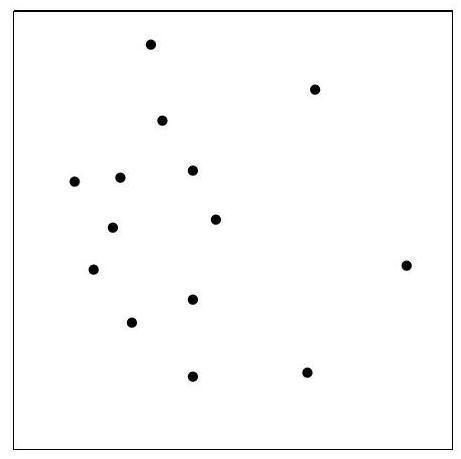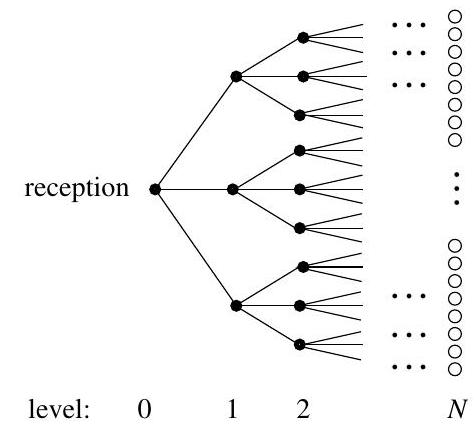Part IA, 2009, Paper 2
Part IA, 2009, Paper 2
Jump to course
Paper 2, Section I, C
Solve the differential equation
subject to the conditions when .
Paper 2, Section I, C
The size of the population of ducks living on the pond of a certain Cambridge college is governed by the equation
where is the number of ducks at time and is a positive constant. Given that , find . What happens as ?
Paper 2, Section II,
Consider the differential equation
where is a constant with . Determine two linearly independent series solutions about , giving an explicit expression for the coefficient of the general term in each series.
Determine the solution of
for which and is finite at .
Paper 2, Section II, C
Consider the second-order ordinary differential equation
where and and are constants with . Calculate the general solution in the cases (i) , (ii) , (iii) .
Now consider the system
with , where and are positive constants. In the case find in the ranges and , where . Hence, determine the value of for which is periodic. For can ever be periodic? Justify your answer.
Paper 2, Section II, C
Consider the first-order ordinary differential equation
where and is a positive constant with . Let . Show that satisfies
Hence, find the general solution of equation when .
Now consider the case , where is a non-zero constant. For find the two equilibrium points of equation , and determine their stability. What happens when ?
Paper 2, Section II, C
(a) The function satisfies the forced wave equation
with initial conditions and . By making the change of variables and , show that
Hence, find .
(b) The thickness of an axisymmetric drop of liquid spreading on a flat surface satisfies
where is the thickness of the drop, is the radial coordinate on the surface and is time. The drop has radius . The boundary conditions are that at and as .
Show that
is independent of time. Given that for some function (which need not be determined) and that is proportional to , find .
Paper 2, Section , F
Prove the law of total probability: if are pairwise disjoint events with , and then .
There are people in a lecture room. Their birthdays are independent random variables, and each person's birthday is equally likely to be any of the 365 days of the year. By using the bound for , prove that if then the probability that at least two people have the same birthday is at least .
[In calculations, you may take .]
Paper 2, Section I, F
Consider a pair of jointly normal random variables , with mean values , , variances and correlation coefficient with .
(a) Write down the joint probability density function for .
(b) Prove that are independent if and only if .
Paper 2, Section II, F
Let and be three pairwise disjoint events such that the union is the full event and . Let be any event with . Prove the formula
A Royal Navy speedboat has intercepted an abandoned cargo of packets of the deadly narcotic spitamin. This sophisticated chemical can be manufactured in only three places in the world: a plant in Authoristan (A), a factory in Bolimbia (B) and the ultramodern laboratory on board of a pirate submarine Crash (C) cruising ocean waters. The investigators wish to determine where this particular cargo comes from, but in the absence of prior knowledge they have to assume that each of the possibilities A, B and C is equally likely.
It is known that a packet from A contains pure spitamin in of cases and is contaminated in of cases. For B the corresponding figures are and , and for they are and .
Analysis of the captured cargo showed that out of 10000 packets checked, 9800 contained the pure drug and the remaining 200 were contaminated. On the basis of this analysis, the Royal Navy captain estimated that of the packets contain pure spitamin and reported his opinion that with probability roughly the cargo was produced in B and with probability roughly it was produced in C.
Assume that the number of contaminated packets follows the binomial distribution where equals 5 for for and 1 for C. Prove that the captain's opinion is wrong: there is an overwhelming chance that the cargo comes from B.
[Hint: Let be the event that 200 out of 10000 packets are contaminated. Compare the ratios of the conditional probabilities and . You may find it helpful that and . You may also take .]
Paper 2, Section II, F
Let and be two independent uniformly distributed random variables on . Prove that and , and find , where is a non-negative integer.
Let be independent random points of the unit square . We say that is a maximal external point if, for each , either or . (For example, in the figure below there are three maximal external points.) Determine the expected number of maximal external points.

Paper 2, Section II, F
No-one in their right mind would wish to be a guest at the Virtual Reality Hotel. See the diagram below showing a part of the floor plan of the hotel where rooms are represented by black or white circles. The hotel is built in a shape of a tree: there is one room (reception) situated at level 0, three rooms at level 1 , nine at level 2 , and so on. The rooms are joined by corridors to their neighbours: each room has four neighbours, apart from the reception, which has three neighbours. Each corridor is blocked with probability and open for passage in both directions with probability , independently for different corridors. Every room at level , where is a given very large number, has an open window through which a guest can (and should) escape into the street. An arriving guest is placed in the reception and then wanders freely, insofar as the blocked corridors allow.

(a) Prove that the probability that the guest will not escape is close to a solution of the equation , where is a probability-generating function that you should specify.
(b) Hence show that the guest's chance of escape is approximately .
Paper 2, Section II, F
I throw two dice and record the scores and . Let be the sum and the difference .
(a) Suppose that the dice are fair, so the values are equally likely. Calculate the mean and variance of both and . Find all the values of and at which the probabilities are each either greatest or least. Determine whether the random variables and are independent.
(b) Now suppose that the dice are unfair, and that they give the values with probabilities and , respectively. Write down the values of 2), and . By comparing with and applying the arithmetic-mean-geometric-mean inequality, or otherwise, show that the probabilities cannot all be equal.